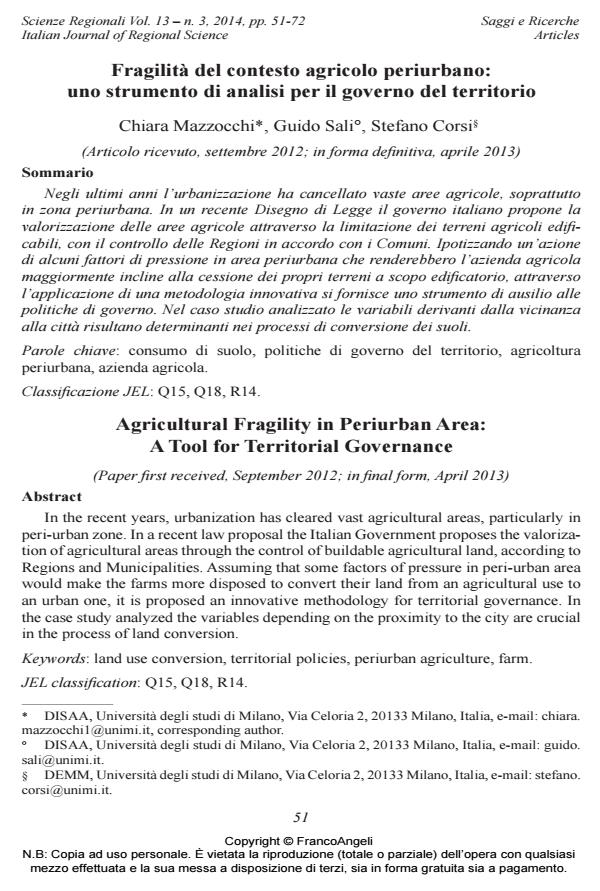Fragilità del contesto agricolo periurbano: uno strumento di analisi per il governo del territorio
Journal title SCIENZE REGIONALI
Author/s Chiara Mazzocchi, Guido Sali, Stefano Corsi
Publishing Year 2014 Issue 2014/3
Language Italian Pages 22 P. 51-72 File size 2957 KB
DOI 10.3280/SCRE2014-003003
DOI is like a bar code for intellectual property: to have more infomation
click here
Below, you can see the article first page
If you want to buy this article in PDF format, you can do it, following the instructions to buy download credits

FrancoAngeli is member of Publishers International Linking Association, Inc (PILA), a not-for-profit association which run the CrossRef service enabling links to and from online scholarly content.
In the recent years, urbanization has cleared vast agricultural areas, particularly in peri-urban zone. In a recent law proposal the Italian Government proposes the valorization of agricultural areas through the control of buildable agricultural land, according to Regions and Municipalities. Assuming that some factors of pressure in peri-urban area would make the farms more disposed to convert their land from an agricultural use to an urban one, it is proposed an innovative methodology for territorial governance. In the case study analyzed the variables depending on the proximity to the city are crucial in the process of land conversion.
Keywords: Land use conversion, territorial policies, periurban agriculture, farm
Jel codes: Q15, Q18, R14.
- The governance of peri-urban areas in Lombardy (IT): the strengths and weaknesses of the regional territorial governance system Valentina Cattivelli, in Valori e Valutazioni /2023 pp.133
DOI: 10.48264/VVSIEV-20233310 - AN EXPLORATION OF THE AGRO-TOWN IN THE ITALIAN COUNTRYSIDE AND RURAL DISTRICT N. Galluzzo, in Trakia Journal of Sciences /2022 pp.181
DOI: 10.15547//tjs.2022.03.003
Chiara Mazzocchi, Guido Sali, Stefano Corsi, Fragilità del contesto agricolo periurbano: uno strumento di analisi per il governo del territorio in "SCIENZE REGIONALI " 3/2014, pp 51-72, DOI: 10.3280/SCRE2014-003003